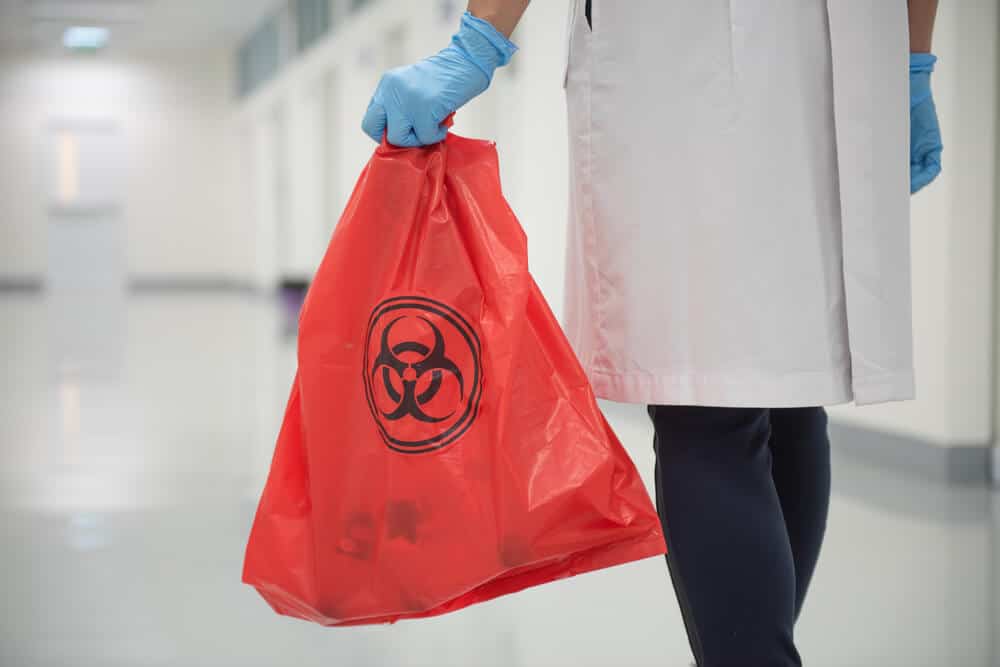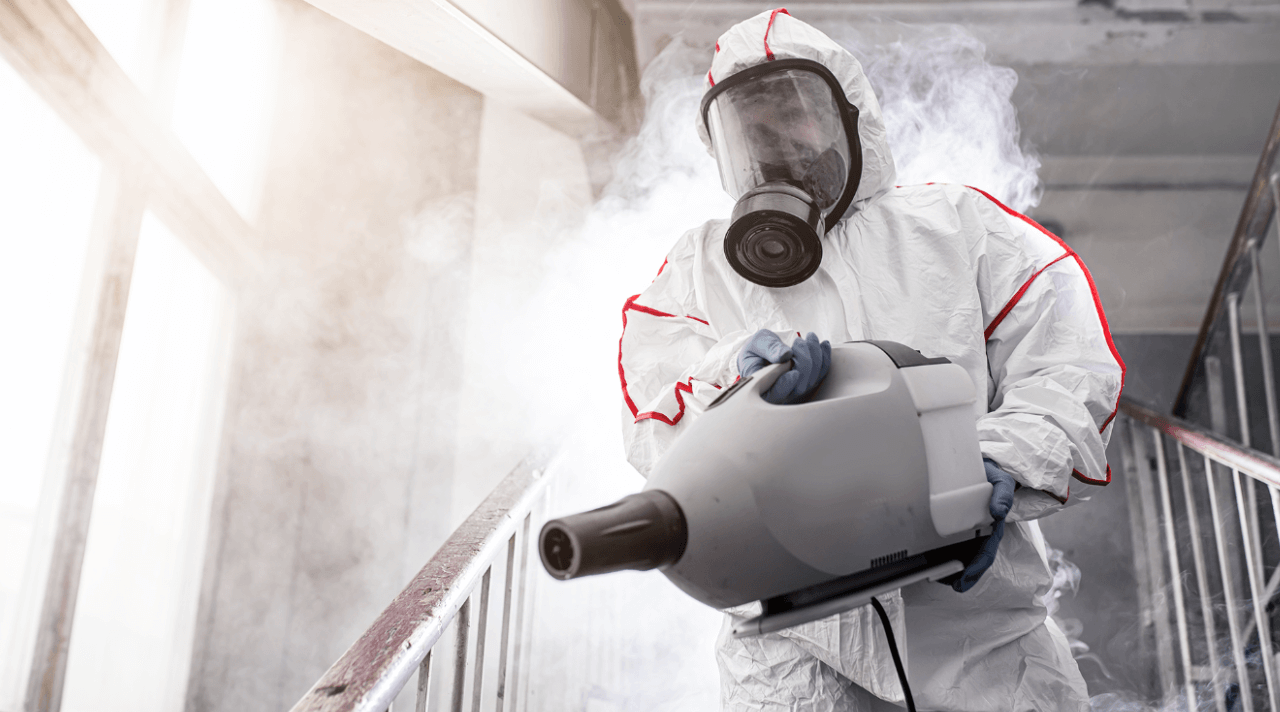Specialist Blood Cleanup: Making Certain Safe and Thorough Purification
Specialist Blood Cleanup: Making Certain Safe and Thorough Purification
Blog Article
Professional Biohazard Cleaning and Decontamination for Blood, Bodily Fluids, and Hazardous Materials
The possible wellness dangers linked with exposure to biohazards emphasize the critical need for careful handling and thorough clean-up. As we navigate the complex landscape of biohazard cleaning, comprehending the nuances of guidelines, compliance, and the specific equipment at play comes to be crucial in ensuring a risk-free and detailed decontamination process.
Wellness Threats of Biohazard Direct Exposure
Direct exposure to biohazards positions substantial health dangers that can result in extreme repercussions for individuals and neighborhoods alike. Biohazards encompass a variety of biological substances, including blood, physical liquids, mold, microorganisms, infections, and other potentially infectious products. When people enter call with these biohazards, whether via accidents, incorrect handling, or ecological direct exposure, they encounter the threat of having serious ailments or conditions.
One of the primary health and wellness threats connected with biohazard direct exposure is the transmission of infectious conditions. Bloodborne microorganisms such as HIV, hepatitis B and C, and different microorganisms can be present in biohazardous products, presenting a straight hazard to human wellness. Inhaling air-borne biohazards like mold spores or coming right into call with contaminated surfaces can also lead to breathing issues, allergic reactions, and other damaging health impacts.
Furthermore, biohazard direct exposure can have lasting wellness ramifications, with some diseases showing up years after the preliminary get in touch with (Blood Cleanup). For that reason, it is vital to prioritize proper biohazard cleansing and decontamination to mitigate these health risks and guarantee the safety of neighborhoods and people

Specialized Training for Biohazard Clean-up
When it involves managing biohazard cleaning effectively and securely, specialized training plays a basic duty in making sure appropriate decontamination procedures are complied with. Biohazard cleanup needs certain expertise and skills to efficiently mitigate risks associated with bloodborne pathogens, physical liquids, and harmful materials. Experts trained in biohazard cleanup undertake extensive direction on just how to safely deal with, eliminate, and throw away biohazardous products to avoid contamination and exposure.
Specialized training for biohazard cleanup covers a series of vital topics, consisting of correct personal safety tools (PPE) usage, bloodborne pathogen awareness, purification methods, and dangerous waste disposal protocols. Individuals learnt biohazard clean-up are outfitted with the required expertise to analyze contamination degrees, identify possible dangers, and implement suitable cleaning treatments in conformity with regulatory standards.
Continuous training and education and learning are paramount in the area of biohazard cleaning to remain updated on the most up to date purification modern technologies, safety and security methods, and policies. By spending in specialized training, biohazard clean-up specialists can properly react to emergency cleaning scenarios and secure both public wellness and the atmosphere.
Value of Correct Purification Strategies
Making use of appropriate decontamination techniques is crucial in biohazard clean-up to efficiently decrease and eliminate unsafe have a peek here products wellness threats. Efficient purification not just makes sure the elimination of noticeable traces of blood, bodily liquids, and other biohazards yet also targets unnoticeable microorganisms that might position significant health dangers otherwise correctly eliminated. By complying with stringent decontamination procedures, educated specialists can dramatically minimize the threat of direct exposure to hazardous microorganisms, viruses, and microorganisms that can lead to diseases or infections.
Appropriate purification strategies entail making use of customized tools and disinfectants that are especially developed to counteract biohazards properly. Extensive cleaning and sanitation of polluted locations are vital to prevent the spread of virus and make certain a secure setting for occupants. Additionally, the appropriate disposal of biohazardous waste adhering to decontamination treatments is vital in avoiding contamination of various other surfaces or people.

Equipment and Devices for Safe Cleanup
When dealing with blood, physical liquids, or harmful products, biohazard cleansing specialists rely on specialized gear to decrease exposure threats and completely decontaminate the afflicted location. Additionally, biohazard cleansing packages consisting of anti-bacterials, absorbent products, and biohazard bags are used to safely dispose and contain of infected products.
Advanced cleaning devices like hospital-grade disinfectants, HEPA-filtered vacuums, and misting equipments are utilized to sterilize surface areas and get rid of biohazards effectively. Specialized tools such as sharps containers and biohazard garbage disposal bins are utilized to safely handle sharp things and biohazardous waste materials. By utilizing the best devices and tools, biohazard cleansing specialists can ensure a comprehensive cleaning procedure that prioritizes safety and security and lessens wellness dangers for both employees and occupants of the damaged area.
Rules and Conformity in Biohazard Cleaning
Appropriate adherence to policies and compliance requirements is vital in biohazard cleaning to make certain the safety of both employees and the environment. Federal government agencies such as OSHA (Occupational Safety and Wellness Administration) and the EPA (Epa) have actually developed particular standards for biohazard cleanup procedures to reduce health risks and environmental contamination. These laws cover a series of facets including the handling, transportation, and disposal of biohazardous products, as well as the required training and protective devices needed for workers included in the clean-up process.
Biohazard cleaning firms should remain current with these policies to guarantee other that their operations meet the link required security criteria. Failure to abide by these policies can result in severe consequences, consisting of penalties, lawsuit, and jeopardizing the health and wellness of individuals and the environment. By adhering to stringent laws and conformity steps, biohazard cleaning companies can effectively mitigate threats and ensure a extensive and risk-free clean-up procedure for all parties involved.
Verdict
In conclusion, biohazard cleaning and purification require specific training, appropriate methods, and adherence to guidelines. Direct exposure to blood, bodily liquids, and hazardous materials presents considerable health and wellness threats, making it vital to make use of the right devices and devices for secure clean-up. By adhering to stringent procedures and standards, specialists can effectively reduce the risks linked with biohazard direct exposure and guarantee the safety of both themselves and others.
As we navigate the elaborate landscape of biohazard cleanup, understanding the nuances of regulations, conformity, and the specialized equipment at play comes to be imperative in guaranteeing a safe and complete decontamination procedure. (Blood Cleanup)
When it comes to handling biohazard cleanup effectively and safely, specialized training plays an essential function in making sure correct purification procedures are followed.Using correct decontamination methods is crucial in biohazard cleaning to successfully decrease and get rid of dangerous materials health and wellness dangers. Additionally, biohazard cleansing kits including disinfectants, absorbent materials, and biohazard bags are used to safely get rid of and consist of of polluted products.
Government companies such as OSHA (Occupational Safety and Wellness Management) and the EPA (Environmental Protection Firm) have established certain guidelines for biohazard cleanup treatments to minimize health threats and environmental contamination.
Report this page